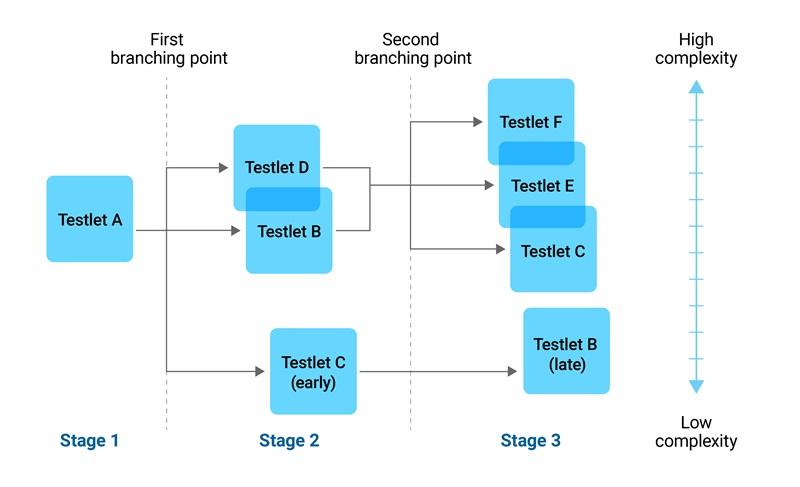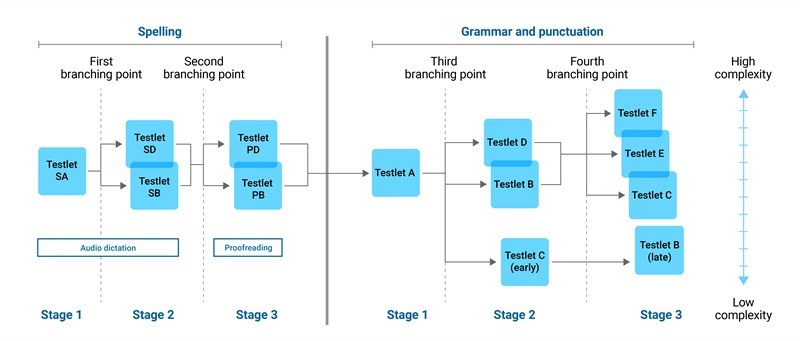Tailored tests
NAPLAN online reading, numeracy and conventions of language use a tailored test design. The tests automatically adapt to a student’s test performance and ask questions that match the student’s achievement level. Tailored testing allows all students to demonstrate their knowledge and encourages students to stay engaged with the test. Tailored testing also provides teachers and schools access to more targeted and detailed information on students’ performance in the assessment.
Reading and numeracy test design

Students at each year level start with a set of questions (testlet A). Each student’s answers in testlet A will determine the questions they see in the second testlet. These may be less complex (B) or more complex (D). Students who receive a low score for testlet A move directly to testlet C (early) and then complete testlet B (late).
The student’s answers in the second testlet will determine the difficulty of questions in the final testlet: highest complexity (F), average complexity (E), lowest complexity (C).
NAPLAN results for each student are based on both the number and difficulty of the questions the student answered correctly. A student who completes a more complex set of questions is more likely to achieve a higher score, while a student who answers the same number of questions correctly, but follows a less complex pathway, will achieve a lower score.
Within the 3 testlets, the Years 7 and 9 numeracy test includes 2 sections: non-calculator and calculator. The online calculator is available to students after completing the non-calculator section of the test. Students will be advised that they cannot return to the non-calculator section once they move to the calculator section.
top
Conventions of language test design

The conventions of language test includes a spelling section and a grammar and punctuation (G&P) section, each with 2 branching points. A message will inform students that they cannot return to the spelling section once they move to G&P.
In reading, numeracy and conventions of language, branching messages (PDF 458 KB) between testlets advise students whether they may go back to previous testlets to change their answers, or not. Changing answers will not affect their branching but will affect their final score.
Benefits of tailored testing
More accurate results
-
Students receive questions that match their ability level, allowing for a more precise measurement of performance.
-
A wider range of test questions can be asked without increasing the length of the test for each student.
-
This leads to better differentiation between students of varying skill levels.
Improved student experience
-
The tests adapt in real time based on how a student is performing.
-
Students who struggle early in the test are given questions that are better suited to their current level, helping them to maintain their confidence.
-
High-performing students receive more complex questions, which helps keep them engaged and appropriately challenged.
-
Research shoes that students are more likely to stay focused and motivated when the test feels relevant and achievable.
-
This can reduce test anxiety for those students who find testing stressful.
Broader curriculum coverage
-
Although each student answers the same number of questions as in paper-based tests, the pool of possible questions is larger.
-
This allows for a wider range of skills and knowledge to be assessed across the student cohort.
More information
top